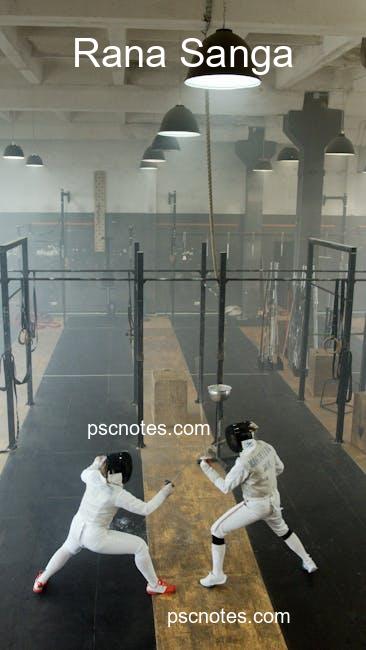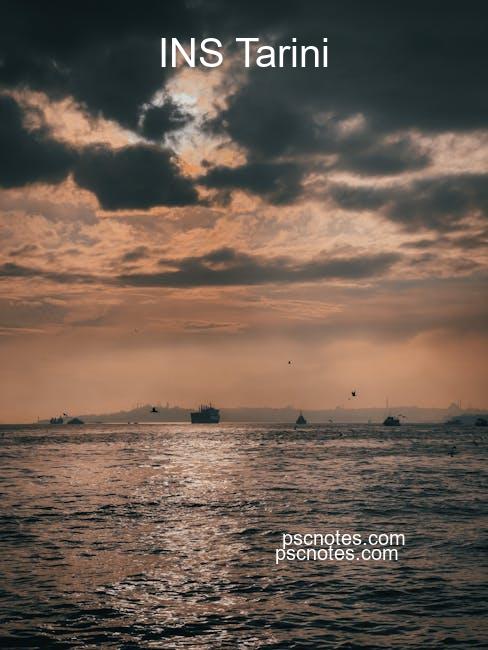- Comprehensive Trade Agreement Talks: India and Chile have initiated discussions for a comprehensive trade agreement aimed at enhancing economic cooperation.
- Copper Mining Agreement: State-owned copper mining firms from both countries have signed an agreement to expand Chile’s access to the Indian mining market.
- Focus on Critical Minerals: Cooperation on critical minerals, resilient supply, and value chains will be prioritized in the new economic agreement.
- MoUs and Agreements Signed: Three MoUs and an agreement were signed, including an “Agreement for Cooperation and Exchange of Information” between CODELCO (Chile) and Hindustan Copper Limited (India).
- Strategic Partnership in Mining: The agreement facilitates joint activities, including a strategic partnership in the exploration of mining properties and mineral beneficiation.
- Chile as “Gateway to Antarctica”: India and Chile signed a letter of intent to deepen bilateral cooperation in Antarctic exploration.
- Cooperation on International Issues: Both countries agreed to increase cooperation on international issues and disputes, emphasizing resolution through dialogue.
- UNSC Reform: There is agreement on the need for reform in the UN Security Council to resolve global crises.
- Yoga as Part of Healthy Lifestyle: Chile has embraced Yoga, with November 4 declared as National Yoga Day.
02.04.25
Coral Bleaching in Australian Coral Reefs
- Mass Coral Bleaching Event: Australia’s Ningaloo Reef and Great Barrier Reef are experiencing severe coral bleaching due to prolonged marine heatwaves. This is described as potentially the worst bleaching event in years for Ningaloo Reef.
- Cause: Rising sea temperatures, linked to climate change, are the primary cause. Ocean waters off Western Australia have been up to 3 degrees Celsius warmer than average.
- Coral Bleaching Explained: Corals expel symbiotic algae (zooxanthellae) when stressed by heat, causing them to lose color and turn white.
- Extent of Bleaching: Bleaching-level heat stress has affected 83.6% of global reefs since 2023, with 81 countries reporting coral bleaching. The current event is “unprecedented” and affects many different coral species at Ningaloo Reef.
- Ningaloo Reef: A 300-km fringing reef and UNESCO World Heritage site, it’s experiencing its worst mass bleaching since 2011. It is home to many species, including whale sharks and endemic reptiles.
- Great Barrier Reef: The world’s largest coral reef system (2,300 km) and a UNESCO World Heritage site, is also affected. It is home to endangered species like the dugong and green turtle.
- Bleaching is not death: Bleaching is a sign of sickness but does not immediately mean the corals are dead.
Ban on Asbestos in KVs & JNVs
- The Ministry of Education has banned asbestos in the construction and refurbishment of Kendriya Vidyalayas (KVs) and Jawahar Navodaya Vidyalayas (JNVs) across India.
- The ban is due to the severe health risks associated with asbestos exposure, aiming to create a cancer-free learning environment for children.
- Asbestos is a known Group 1 carcinogen, linked to lung cancer, mesothelioma, and chronic respiratory diseases, causing over 200,000 deaths annually.
- While India has banned asbestos mining, it still imports and processes chrysotile (white asbestos) for asbestos-cement roofing.
- The Ministry of Education has issued guidelines to ban asbestos in new construction and refurbishment projects in all KVs and JNVs.
- Kendriya Vidyalaya Sangathan (KVS) has instructed principals to strictly enforce the ban in all ongoing and future projects, replacing existing asbestos structures.
- The initiative aims to gradually phase out asbestos use in schools and build a healthier, cancer-free nation for children.
- Over 65 countries have already banned asbestos due to its hazardous effects.
Debate on Dual Citizenship for Indians
-
Resurfaced Debate: Discussions on dual citizenship for Indians are gaining momentum, questioning the adequacy of the existing Overseas Citizenship of India (OCI).
-
Largest Diaspora: India has a large diaspora with over 3.5 crore Indians living abroad, being the top recipient of remittances.
-
Limitations of OCI: OCI is not genuine dual citizenship, lacking political rights and land ownership, perceived as a privilege, not a right.
-
Changing Global Climate: Hardening global stance towards migrants and increasing renunciation of Indian citizenship necessitate reconsideration of dual citizenship.
-
Strategic Engagement: Dual citizenship can strengthen India’s soft power, diaspora investment, and cultural links.
-
Constitutional Restrictions: Article 9 of the Indian Constitution prohibits dual citizenship, requiring renunciation of Indian citizenship upon acquiring foreign nationality.
-
Democratic Legitimacy: Concerns over divided allegiance and potential external influence challenge democratic sovereignty.
-
Security Concerns: Fears of security risks and legal grey zones, especially with sensitive professions abroad.
-
Enhanced OCI Framework: Provide greater legal stability and rights within the OCI framework, with transparent processes.
-
Participatory Mechanisms: Consider limited political participation for OCIs at the local governance level (e.g., panchayats).
-
Cultural Identity Programs: Expand programs connecting diaspora youth with Indian heritage.
-
Selective Dual Citizenship: If introduced, restrict it to strategic partner nations, excluding high offices.
-
25th Anniversary: The Report of the High-Level Committee on the Indian Diaspora recommended dual citizenship.
-
Emotional and Practical Security: Genuine dual citizenship provides secure rights, differing from selectively withdrawn privileges of OCI.
-
Shift in Presumption: Change the requirement of Indians to give up citizenship to a presumption that Indians retain citizenship.
-
Political Rights: Voting can be limited to those who return or conducted abroad. Restrict high offices to those without another citizenship.
-
Security Concerns Overblown: Concerns may be addressed by limiting citizenship to those with more recent links.
- Make laws applicable to dual citizens as well and they should not constitute a threat.
- Emotional Ties Dual citizenship will strengthen symbolic, psychological and practical bonds, enhancing energy.
SC Upholds Due Process in Prayagraj Demolition Case
-
SC Upholds Due Process: The Supreme Court condemned the Prayagraj Development Authority’s 2021 demolition of homes as “inhumane and illegal,” ordering Rs 10 lakh compensation per affected individual.
-
Right to Shelter: The Court reinforced that the right to shelter is integral to Article 21 (right to life), and arbitrary demolition violates human dignity.
-
Violation of Due Process: Authorities failed to provide homeowners a reasonable opportunity to respond; notices were improperly affixed instead of being personally served as required by the UPUPD Act, 1973. Genuine efforts for personal service must be made. “This affixing business must be stopped. They have lost their houses because of this”.
-
Precedent: The ruling aligns with the SC’s 2024 guidelines against “bulldozer justice,” mandating 15 days’ notice and a chance to challenge demolition orders.
-
Arbitrary Demolitions Undermine Rule of Law: Demolitions without due process undermine the judiciary and promote “instant justice.”
-
Collective Punishment: Arbitrary demolitions result in families being rendered homeless, amounting to collective punishment. Geneva convention and Geneva Conventions (Article 87) prohibits collective punishment, arbitrary demolitions breach this norm.
-
SC Concern: The court was shocked by a video of a young girl fleeing a demolition with her books, reflecting the humanitarian impact.
-
Nazul Land Issue: While the SC didn’t address land rights, it focused on the improper demolition process, emphasizing the need for fair notice and opportunity to be heard.
-
Future Action: Court leaves it open to appellants to file appropiate proceedings for establishing their title and interest with regard to the property.
Rana Sanga
-
Controversy in Parliament: Remarks made by a Samajwadi Party MP, Ramji Lal Suman, against Rana Sanga in the Rajya Sabha sparked outrage. The MP’s statement suggested Rana Sanga “invited” Babur.
-
BJP’s Condemnation: Former Union Minister Ravi Shankar Prasad (BJP) strongly condemned the remarks, asserting that India will not tolerate insults to warriors like Rana Sanga.
-
Historical Context: Rana Sanga (1484-1527) was the Rajput ruler of Mewar, known for expanding his kingdom and his battles against the Lodi dynasty and the Sultan of Malwa.
-
Expunged Remarks: The specific description of Rana Sanga made by the SP MP was removed from the official records of the Rajya Sabha.
-
Rana Sanga’s Legacy: He is remembered as a symbol of Rajput valor and an important figure in Indian history.
-
BJP’s Defense: BJP MP Rao Rajendra Singh emphasized Rana Sanga’s valor and questioned whether the opposition approved of the controversial comments.
Farm Mechanization
- Shift in Focus: India’s farm mechanization is evolving from tractor-dominance to smart machinery, automation, and precision tools.
- Farm Mechanization Defined: Utilizing machines (harvesters, modern implements) to boost productivity, efficiency, and reduce reliance on manual labor.
- Emerging Technologies:
- Precision Agriculture (GPS, IoT, AI, drones, data analytics for optimized resource use).
- Drones (crop monitoring, pesticide spraying, yield estimation; Drone Didi Scheme for women SHGs).
- Autonomous Machinery (driverless tractors, robotic harvesters).
- Agri Robotics and AI (automation in sowing, irrigation, weeding, harvesting).
- Mechanization Levels: Overall ~47% in India. Punjab & Haryana: 40-45%, Northeastern states: negligible. Cereal crops: 50-60%, horticulture: less mechanized.
- Global Comparison: Developed nations: >90%, underdeveloped regions (Africa, South Asia): manual labor-dependent. China (60%), Brazil (75%) lead among developing nations.
- Significance:
- Input Savings (ICAR): 15–20% on seeds/fertilizers, 5–20% increase in cropping intensity.
- Higher Efficiency: improved labor efficiency, 15–20% reduction in operation time.
- Efficient Land Utilisation: Advanced tilling tools making hard land arable and mechanised irrigation ensuring efficient water use.
- Need for Mechanization:
- Rising Food Demand: Population growth, limited land/water, monsoon dependency.
- Less Efficient Agriculture: Low GDP contribution despite large workforce.
- Labor Shortages: Urbanization, MGNREGA.
- Irrigation Challenges: Dependence on rainfed agriculture.
- Challenges:
- Small Land Holdings: Average 1.16 hectares.
- Financial Constraints: High machinery costs.
- Poor Equipment Quality: Substandard machinery.
- Regional Disparities: Hilly areas, remote regions.
- Way Forward:
- Land Consolidation & Custom Hiring (CHCs).
- Technology & Financial Access (subsidies, low-interest credit).
- R&D, Standardization & Training.
- Inclusive Mechanization (specialized machinery for diverse regions).
- Market Growth: Farm machinery market is growing faster than tractors. Rotavators: a ₹2,000 crore market. Agri machinery market (excluding tractors): >₹10,000 crore.
- Labor Savings: Combines drastically reduce harvesting time and costs compared to manual labor. Rice transplanters address labor shortages.
- Custom Hiring Model: Owner-operators providing harvesting/transplanting services to multiple farmers. This model is more sustainable.
INS Tarini
- INSV Tarini reaches Cape Town: Completes the fourth and final international stop of Navika Sagar Parikrama II.
- All-women crew: Lt Cdr Dilna K. and Lt Cdr Roopa A. are crewing the vessel.
- Reception: Welcomed by Indian Consul General, South African Navy officials, and a naval band.
- Maintenance in Cape Town: Two-week docking for scheduled maintenance and repairs.
- Engagement: Crew will interact with the South African Navy, including visits to Simon’s Town Naval Base and Gordon’s Bay Naval College, and participate in community outreach.
- Departure: Scheduled to leave Cape Town on April 15 for the final leg to India.
- Challenging Voyage: The journey from Port Stanley involved rough seas, cold temperatures, and stormy weather, with winds exceeding 50 knots and waves up to 7 meters.
- Navika Sagar Parikrama II Details: Flagged off from Goa on October 2, 2024, aiming to cover 23,400 nautical miles in eight months, rounding three major capes.
- Previous Stops: Fremantle (Australia), Lyttelton (New Zealand), and Port Stanley (Falkland Islands).
- Expected Conclusion: Mission is scheduled to conclude in May 2025 in Goa.
- INSV Tarini Significance: Indigenously built 56-foot sailing vessel commissioned in 2017.
- India-South Africa Naval Ties: This port call follows recent interactions, including INS Talwar’s participation in Exercise IBSAMAR and INS Tushil’s port call at Durban.
Vibe Coding
- “Vibe Coding” is trending in Silicon Valley, coined by OpenAI’s Andrej Karpathy.
- It uses generative AI to create entire apps from natural language prompts, not just assist in coding.
- Large Language Models (LLMs) like ChatGPT are central to vibe coding.
- It democratizes app creation, enabling non-programmers to realize their ideas.
- Potential security risks exist as less experienced individuals may rely solely on AI-generated code.
- AI-generated code might lack context, leading to performance, maintenance, and security issues.
- Concerns exist that vibe coding could displace experienced human coders with less skilled individuals.
Why in the news:
- Novelty: It represents a significant shift in software development methodology.
- Accessibility: It promises to open software development to a wider audience.
- Risk: Raises important questions about code quality, security, and the future of software engineering roles.
- Karpathy’s involvement: Credibility due to association with a highly respected figure in AI.
- ChatGPT association: Connection to a well-known and widely used AI tool amplifies interest.








